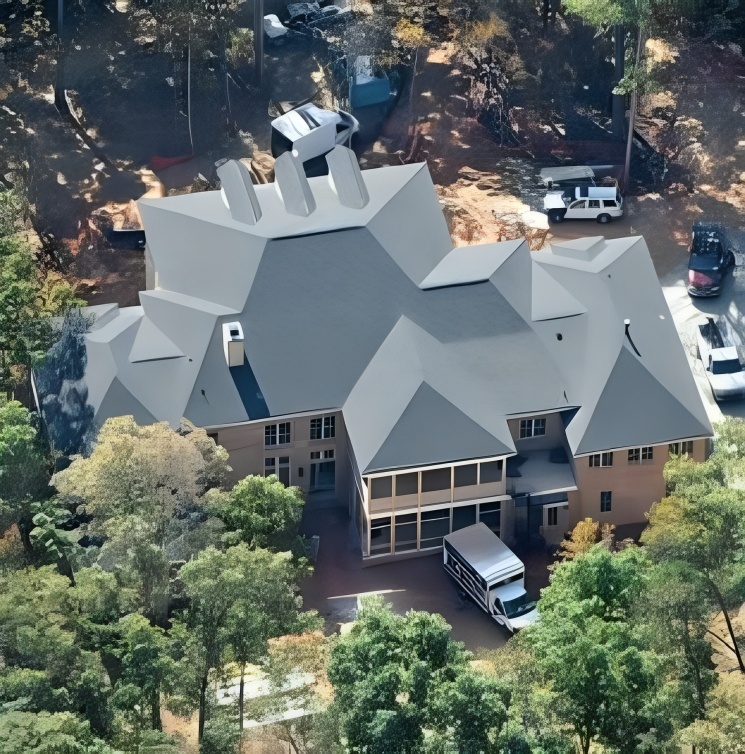The concept of a pastor’s house typically evokes images of something modest and unassuming. Yet, recent attention around Steven Furtick’s North Carolina house has ignited conversations about the size and grandeur of some modern-day religious leaders’ residences. While the ethics of such dwellings are a separate debate, the Furtick house presents a fascinating case study in architectural choices, interior design trends, and the broader tension between grand homes and the growing appeal of minimalist living.
Dissecting the Design: Architectural Style and Features
Steven Furtick’s house is undeniably large, estimated at roughly 16,000 square feet. Its architectural style is challenging to neatly categorize. It draws inspiration from European influences, with hints of French Chateau and perhaps Italianate villa design. Notable features include:
- Imposing Facade: The home’s front is dominated by multiple gables, grand arched entryways, and extensive use of stonework. This immediately conveys a sense of scale and opulence.
- Expansive Interior: While floor plans are private, reports indicate a vast open-concept layout. Luxury features like an indoor basketball court, multiple entertaining areas, and numerous bedrooms suggest a focus on expansive living.
- Outdoor Spaces: The property boasts a sizable pool, manicured grounds, and likely other leisure-focused amenities. This extends the ‘living large’ concept into the exterior.
Mega Mansions: A Reflection of Changing Tastes?
While homes of this size have always existed for the ultra-wealthy, the rise of social media and reality TV has made them more visible to the average person. Influencers and celebrities flaunt lavish lifestyles, which can create a certain aspiration in some viewers. This might contribute to the continued appeal of mega-mansions, even as other trends push in the opposite direction.
The Minimalism Counter-Trend
In sharp contrast to the mega-mansion concept stands the ever-growing popularity of minimalism. Minimalist living emphasizes reducing possessions, focusing on experiences over accumulation, and creating intentional, clutter-free spaces. Celebrities like Marie Kondo have elevated minimalism into a significant lifestyle movement.
Minimalism speaks to several factors:
- Sustainability Concerns: Our consumerist culture is under increasing scrutiny for its environmental impact. Smaller homes naturally have a reduced footprint.
- Rejecting Excess: As technology simplifies life, some find a desire to shed unnecessary ‘stuff’ to gain peace of mind.
- Prioritizing Experiences: Younger generations seem to value travel and experiences more than the previous emphasis on large, possession-filled homes.
Mega Mansions vs. Minimalism: A Matter of Personal Choice
Ultimately, deciding whether to live in a mega-mansion or embrace a minimalist home is deeply personal. Factors like family size, individual preferences, and financial resources all play a role. However, it’s fascinating to note these opposing design philosophies as they reflect wider societal trends regarding how we live.
Mega-mansions: The Luxury Must-Haves
Dedicated Entertainment Spaces: Home theaters with plush seating and advanced sound systems are the norm. Game rooms, bowling alleys, and even indoor sports courts are sometimes found in the largest mega-mansions.
Wellness Focus: Elaborate home spas with saunas, steam rooms, and massage areas. Large, resort-style pools and fully-equipped home gyms reflect the focus on in-home wellness.
Smart Home Technology: Extensive integrated systems control lighting, climate, security, and entertainment from a central hub (or even a smartphone).
The ‘Extras’: Wine cellars, libraries, dedicated hobby rooms (for music, art, etc.), and even features like car elevators can be found in the most extravagant examples.
Minimalism: Forms and Functions
Minimalist Interior Design: Emphasizes clean lines, uncluttered surfaces, natural materials, and a focus on functionality. Neutral color palettes create serenity.
Tiny Homes: The most extreme form of minimalism, tiny houses typically fall under 400 square feet. Ingenious space-saving layouts and multifunctional furniture are essential.
Capsule Wardrobes: A minimalist approach to fashion. This involves curating a small collection of high-quality, versatile pieces that can be mixed and matched into numerous outfits.
Digital Minimalism: This extends the philosophy to our tech lives. It means decluttering devices, limiting app usage, and being intentional about screen time for greater mental clarity.
Addressing Practical Considerations
Cost: It’s impossible to ignore the financial chasm. Building a mega-mansion comes with multi-million dollar costs compared to the relative affordability of a modest home or the extreme frugality of the tiny house lifestyle.
Maintenance: Even when initial cost isn’t a factor, upkeep is demanding. A vast house requires more cleaning (often professional services), landscaping, and repairs. Luxury features, like pools, need specialized maintenance.
Resale Value: While there’s a market for mega-mansions, it’s far more niche than for moderately sized homes. The pool of potential buyers shrinks, and selling can take considerably longer. Changing design trends can also impact value over time.
Design Inspiration, Not Judgement
It’s important to remember that the Furtick home serves as a case study and source of design inspiration rather than a target for personal judgment. Even those critical of its scale can find points of interest in the architecture, materials, or landscaping choices.
Whether you dream of a palatial abode or crave the simplicity of a tiny house, there’s always something to learn from the way others choose to design their living spaces.





